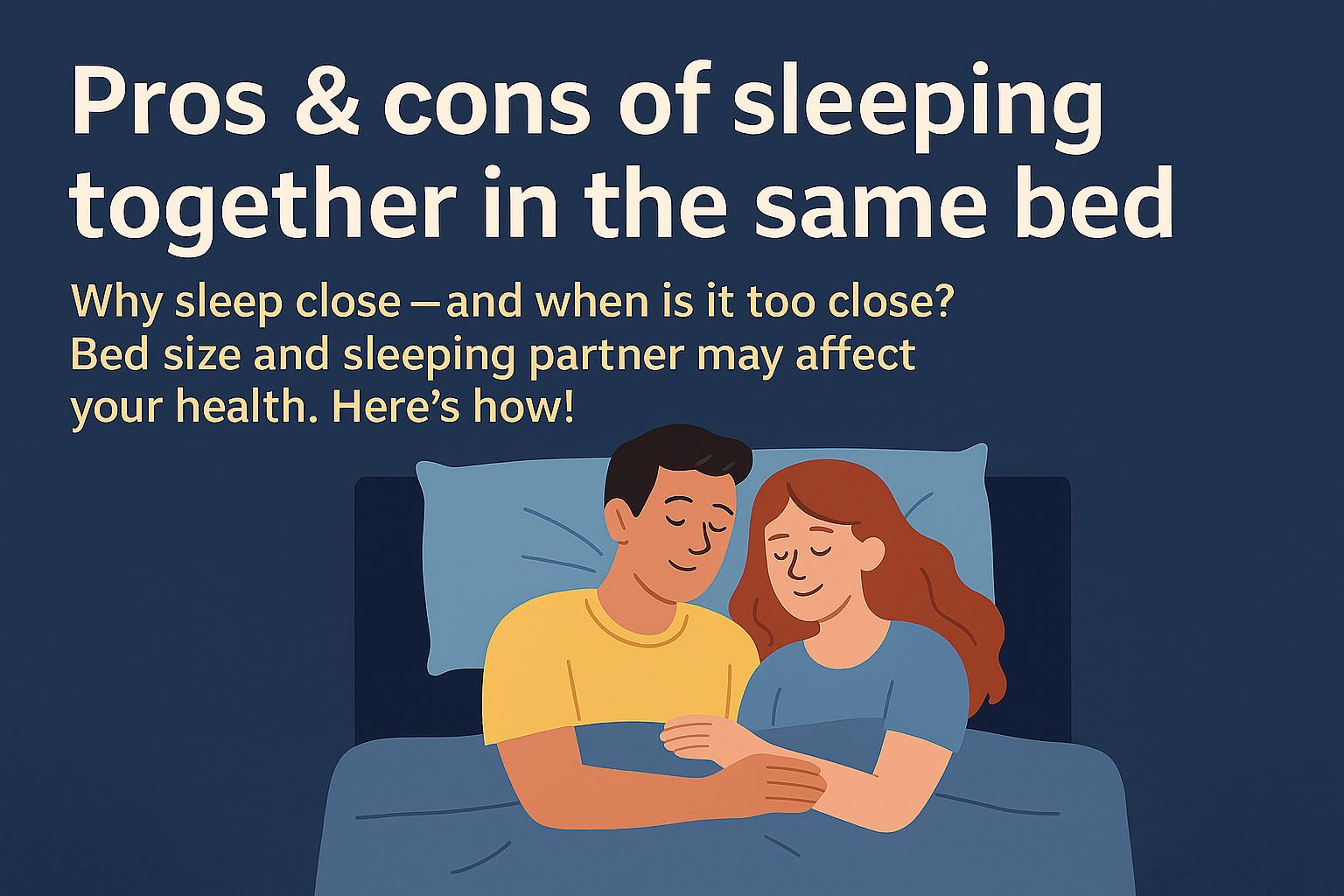Bed size isn’t just about how much you can stretch out—it’s about how your brain and body respond to the space around you. From relationship health to cortisol levels, your bed (and bed size) affects more than just your sleep.

🛌 1. Space = Mental Security & Better Rest
Sharing a bed can align your body’s natural sleep rhythms. Research highlighted by PubMed Central shows that couples who sleep close often experience synchronized sleep cycles and improved REM quality.
Meanwhile, Time reports that cuddling before sleep boosts oxytocin and lowers cortisol, making you feel more relaxed and connected—ideal conditions for winding down.
😬 2. Too Little Bed = Relationship Friction
According to The Sleep Foundation, nearly half of couples say poor sleep impacts their relationship—often due to snoring, temperature preferences, or space limitations.
In some cases, sleeping apart improves rest and mood. Read more about how sleep divorce sometimes can improve sleep quality. But Mattress Online notes that long-term separation can reduce sleep satisfaction for couples who crave nighttime closeness.
🛏️ 3. The Right Size Makes a Big Difference
Too small: Disrupts movement, interrupts deep sleep, and creates friction.
Too large: May reduce emotional intimacy, especially in new couples.
The sweet spot: Varies by couple, body type, and sleep position—but generally, more width means fewer midnight collisions.
🧺 4. The Scandinavian Duvet Hack
As The Guardian writes, many Scandinavians use two single duvets on one shared bed. The result? Fewer fights over the covers and better temperature control. It’s a widely practiced trick in Norway, Sweden, and Denmark—and it’s catching on in hotels across Europe.
💑 5. Balancing Intimacy and Independence
According to The Sun, cuddling at the start of the night followed by separate sleeping space offers couples the best of both worlds—emotional closeness and undisturbed sleep.
And Mattress Lab points out that couples who engage in physical intimacy before sleep report lower stress and higher overall sleep satisfaction, thanks to the hormonal effects of oxytocin and prolactin.
🛠️ Pro Tips for Psychologically Smart Sleep
| Tip | Why It Works |
|---|---|
| Choose a bed size based on sleep style | More width = fewer interruptions |
| Try a 2-duvet setup | Solves cover wars and improves comfort |
| Split mattresses for couples | Customize firmness or temperature for each person |
| Cuddle before sleeping apart | Builds connection, then prioritizes rest |
| Talk openly about sleep needs | Builds trust, not resentment |
🔗 Explore More from BedSize.com
- Bed Size by Sleep Position – for sprawlers, curlers, and side-sleepers
- Bed Size for Couples – tailored advice for partners
- Bed Size and Health – how sleep surface impacts your body
💤 Final Thought
Your bed size doesn’t just shape your sleep—it shapes your mood, relationships, and mental space. By understanding the psychology behind your nightly routine, you can make smarter choices about how (and with whom) you sleep.
Leave a Reply